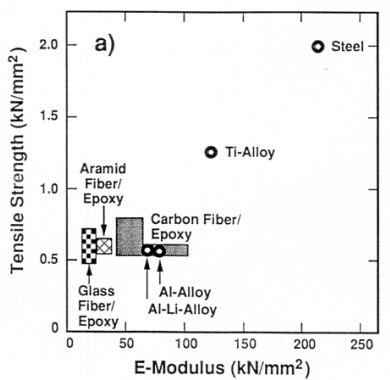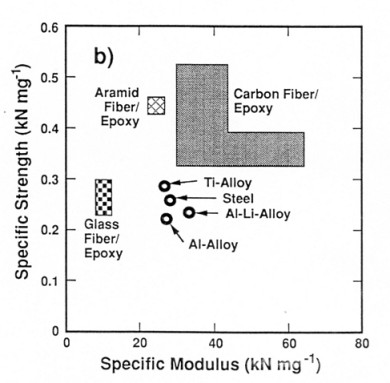Fibers are the reinforcing material most commonly used in high performance composites and thus they are the load bearing component. They must have high thermal stability and should not contract or expand much with temperature. Fiber is a general term for a filament with a finite length that is at least 100 times its diameter (typically 0.10 to 0.13 mm.). Defects can be placed on the surface to allow for the fiber to interact with the matrix, however; bulk defects should be low. In most cases, fibers are prepared by drawing from a molten bath, spinning or deposition on a substrate. The term fiber is often used synonymously with filament.
A filament is the smallest unit of a fibrous material. They are the basic units formed during drawing and spinning, which are gathered into strands of fiber for use in composites. Filaments are of extreme length and very small diameter (usually less than 25 micrometers). Normally, filaments are not used individually but are bundled or weaved to form fibers.
Some short fibers are called whiskers which
are short single-crystal fibers or filaments made from a variety of materials
ranging from 1 to 25 microns and aspect ratios between 100 and 15,000.
The polymer fiber advantage:
The physical properties of advanced composites are superior to the traditional metallic structural materials when they have been normalized by their density (specific properties). Their density-related performance is the key to their penetration of lightweight structural components. The tensile strengths and moduli are generally lower than the alloys and steel materials in Figure A. However, when the tensile moduli and strengths are divided by their densities (Figure B), their specific strengths and moduli are generally greater than those of the alloys and steel.
Fiber Criteria:
High tensile modulus and tensile strength.
High impact resistance.
High stiffness
High dimensional stability (low coefficient of expansion)
Here's an example of one fiber composite we all know and love. Fiberglass.
Dry Spinning Melt Spinning Wet Spinning Deposition Fiber Types
Natural Polymeric Reinforcement Orientations
Orientations
If you get lost in some of the jargon, then clickHere to got to a brief glossary of terms.

